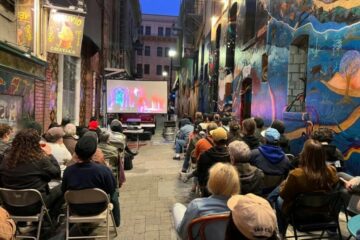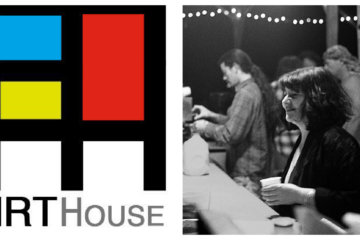The City That Was: When North Beach Was Italian
In The City That Was, Bohemian Archivist P Segal tells a weekly story of what you all missed: the days when artists, writers, musicians, and unemployed visionaries were playing hard in the city’s streets and paying the rent working part time.
Tourist brochures tell visitors that North beach is the Italian district of the city, and it’s certainly where people go to eat. Some of the businesses catering to an Italian clientele are still there. What isn’t there is a lot of Italians.
When I was a child, you couldn’t sneeze without infecting an Italian in North Beach and the Marina. In spite of that, it wasn’t like Italy. The food was the same, the basic language was the same, and the behavior of the citizens was the same. What was different was the community.
If you don’t speak Italian, you might travel up and down the Italian peninsula and never really get that Italy has never stopped being a collection of xenophobic mini-kingdoms that hold each other in contempt. People in Milan hate people from Palermo; people from Venice think people from Florence are stuck up. People from Rome still think they control the world, and everyone else is inferior. The Northerners call the Sicilians “Africans.” Really.
People came to America from all over Italy because they heard it was a good place to make money. When they arrived, they ran up against a sobering truth: it didn’t matter what goddamn city they were from, they were all “dagos” and “wops” in the new world. They needed solidarity against the xenophobia of Americans, no matter where they were from in the old country. So they all joined forces, in an insidious campaign to beat down any resistance to their culture, through the lingua franca of food and coffee.
One of my father’s friends was Rose Alioto, the woman who opened Alioto’s #8 on the Wharf. Rose started her business, when she found herself a single mother, on a fire in the dirt front yard of her house on Telegraph Hill, selling home-cooked meals to the Italian fisherman and sailors who lived close to the bay. In those days, you could make money without a business license, Board of Health certification, Planning Department regulations, Board of Equalization tax demands, or any of that other stuff that makes opening a restaurant a gigantic and expensive pain these days.
There were five Italian newspapers in the neighborhood by the 1920s, but only two when I was born, and two Italian social clubs. When my father got babysitting duty, he’d take me to his club, where he and his friends played poker and smoked cigarettes, pipes, and cigars. Men played old country folk songs on their instruments in the Italian barbershop on Columbus, and they played bocce up the street. There were boys-only bars like Gino and Carlo’s,where people played cards. And then there was Caffe Trieste.
When I was a child, English was still the second language at the Trieste. My father would take me there and ply me with Italian sodas, while he and a bunch of other natty dagos postured in their silk suits, fedoras, and silk pocket handkerchiefs, discussing literature, politics, art, sports, and how clueless and uncultured Americans were.
By the mid-‘50s, the cafes of North Beach had been infiltrated by the Beat writers and expat literary types seeking the closest thing to Europe on American soil. The Trieste was then half dagos and half bohos. And while the Italians had contempt for almost everyone else, they did cut the writers some slack. At least they were cultured. (My people may be arrogant, sexist, xenophobic, and neurotic, but I will give them this: they have a heartfelt, genuine respect for artists, intellectuals, and educators.)
So where did all the Italians go? Well, they came to San Francisco to make some money. And then, like Don Vito Corleone, they felt the urge to retire to a plot of land and grow grapes and tomatoes. Gradually, they found places in outlying—and warmer— farmlands, in Napa, Sonoma, Mendocino, and Marin, where land was cheap and it looked like home. A lot of them planted the vines that grew what you’re drinking with dinner. So they’re still with us. And to their credit also, North Beach still looks very much the same, but with fewer fedoras.
photo from SFGate









